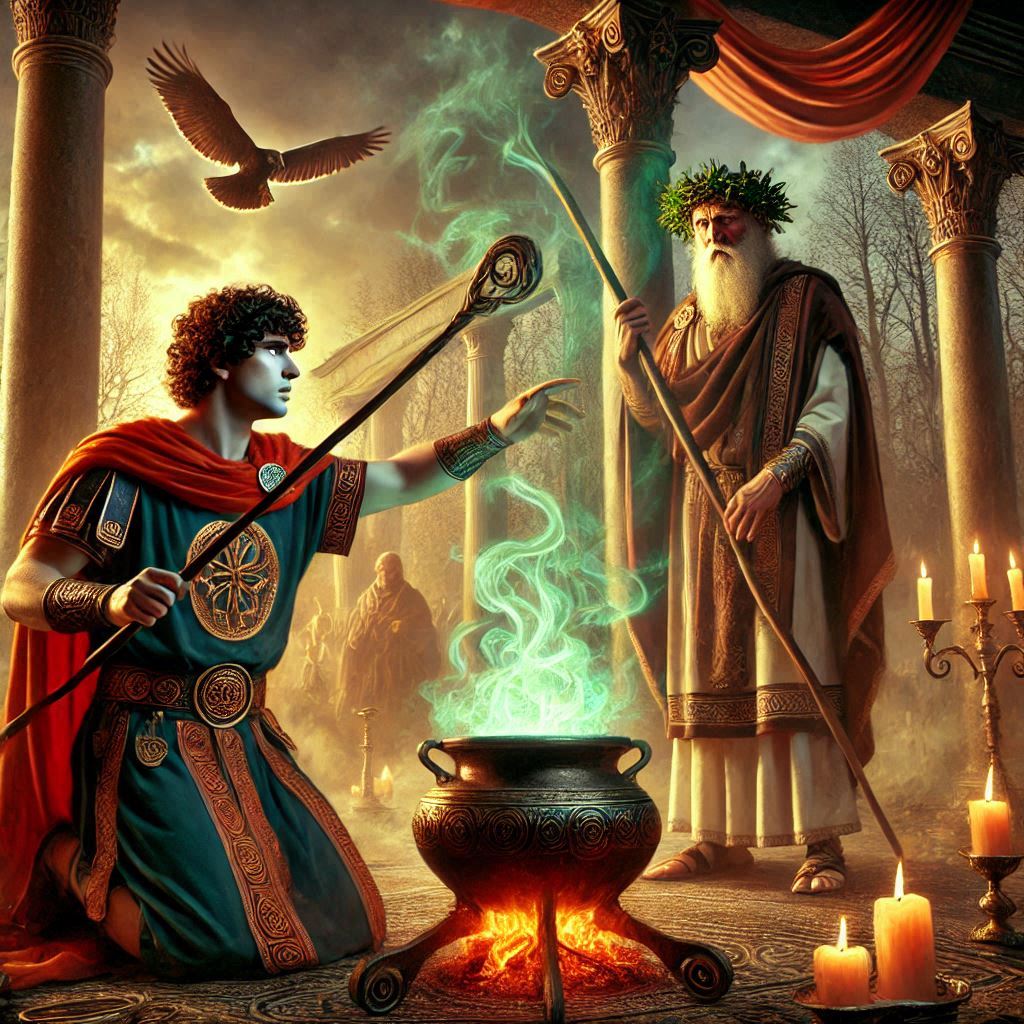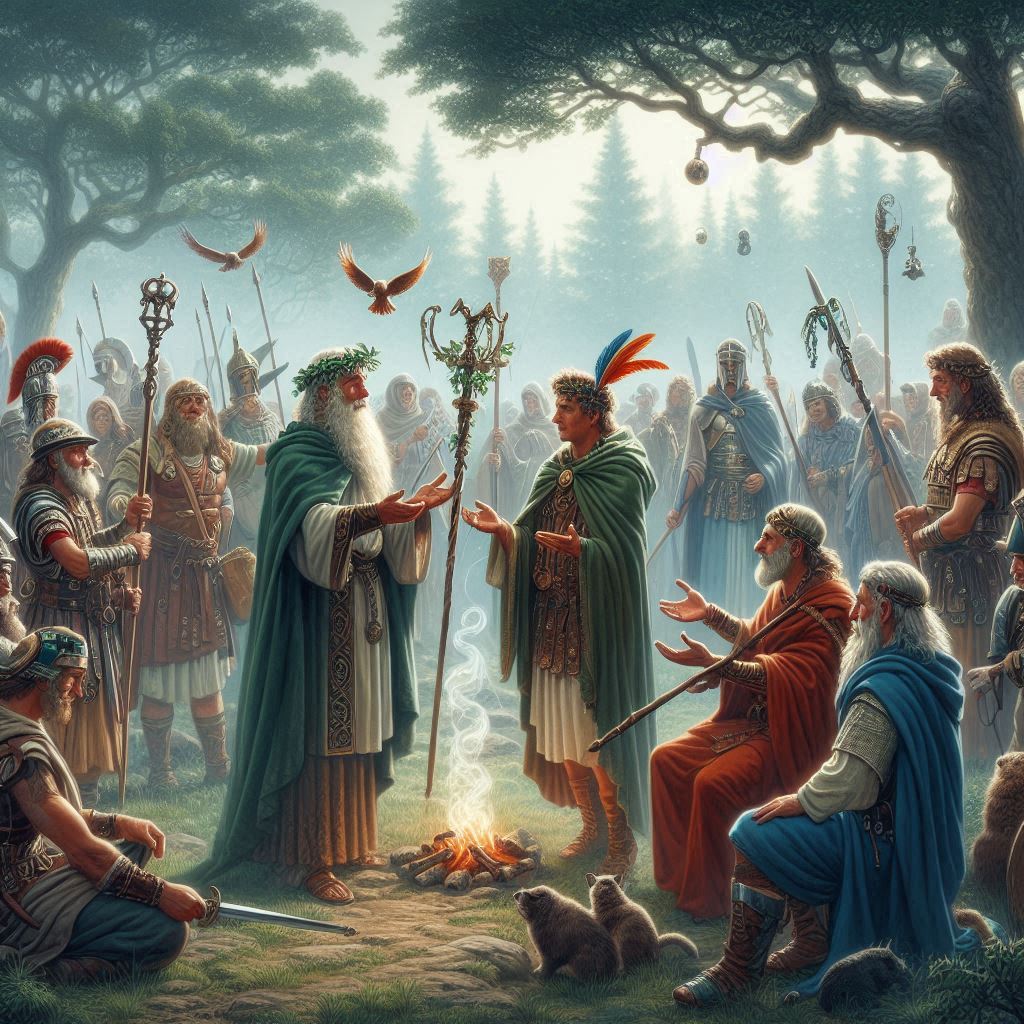The conquering Romans obviously had a significant influence on the culture and traditions of the known world during their imperial age. Even today the impact of Roman practical magic lingers in the western world.
Some schools of thought hold that Roman magic had significant influence on Celtic practices while other paradigms insist Northern Europe forged its own way in spite of the conquest. I’m not going to specify or quote either position because I lost the damn notes for this post ages ago; I’m really just adding the article to get some new content on the blog this week.
Roman Magic: A Tapestry of Influences
Roman magic was a syncretic system, drawing from Etruscan, Greek, Egyptian, and even Babylonian sources. It was characterized by a practical, results-oriented approach, with a focus on spells, charms, and rituals for healing, protection, love, and cursing.
Staves played a significant role in Roman magic, serving as conduits for power and symbols of authority. Consider the lituus, the curved staff used by augurs to interpret the will of the gods. Or the caduceus, associated with Mercury, the messenger god, and often depicted entwined with serpents, symbolizing healing and transformation. These staves were not mere tools; they were imbued with symbolic meaning and believed to possess inherent magical power.
Celtic Magic: Nature’s Whisper
Celtic magic, in contrast, was deeply intertwined with the natural world. Trees, rivers, and animals were seen as imbued with spirits and magical properties. The Druids, the priestly class of the Celts, were said to possess profound knowledge of herbalism, divination, and spellcraft.
While written sources on Celtic magic are scarce, archaeological evidence suggests the use of staves in their rituals. The “Staff of the Dagda,” a mythical weapon capable of both killing and resurrecting, speaks to the power attributed to these objects. Celtic art often depicts deities and heroes wielding staves, further emphasizing their importance.

The Roman Influence: A Subtle Weaving
The Roman conquest of Gaul and Britain brought about significant cultural exchange, including in the realm of magic. Roman deities were assimilated into the Celtic pantheon, and Roman magical practices likely influenced the development of Celtic magic.
While direct evidence of Roman staves influencing Celtic practices is limited, we can infer their impact through several avenues:
- Syncretism: The Romans were known for their ability to absorb and adapt foreign deities and practices. It’s plausible that Celtic magicians incorporated Roman stave symbolism and rituals into their own traditions.
- Trade and Exchange: The Roman Empire facilitated trade and cultural exchange across vast distances. Magical objects, including staves, could have been traded or gifted, leading to cross-cultural influences.
- Religious Syncretism: As Roman and Celtic deities were assimilated, their associated symbols and tools, including staves, may have also merged. For example, the Roman god Mercury was often equated with the Celtic god Lugus, both associated with magic and travel. This could have led to the adoption of the caduceus or similar staff symbolism in Celtic magic.
Evidence and Speculation
Unfortunately, concrete evidence linking Roman staves directly to Celtic magical practices is scarce. Celtic traditions were primarily oral, and much of their knowledge was lost during the Roman conquest and subsequent Christianization. However, we can piece together a plausible picture through archaeological finds and surviving folklore.
- Archaeological Evidence: Excavations of Romano-British sites have yielded artifacts that suggest a blending of Roman and Celtic religious practices. While staves themselves are rarely preserved, depictions on altars and votive offerings hint at their continued use in magical contexts.
- Folklore and Mythology: Celtic folklore is replete with tales of magical staves, often possessing healing or transformative powers. While these stories may predate Roman influence, it’s possible that Roman symbolism and practices further enriched these narratives.
Conclusion: A Legacy of Magic
While the precise extent of Roman influence on Celtic magical staves remains shrouded in mystery, it’s undeniable that these two cultures interacted and influenced each other in profound ways. The Romans brought with them a structured, results-oriented approach to magic, while the Celts offered a deep connection to the natural world and its spirits.
The legacy of this interaction can be seen in the continued use of staves in various Western magical traditions today. Whether used for divination, healing, or invoking power, the staff remains a potent symbol of the magician’s connection to the unseen forces of the universe.
As you delve deeper into the mysteries of magic, remember the words of the great Paracelsus: “Magic is a great hidden wisdom, and reason is a great open folly.” Embrace the intuitive wisdom of the Celts and the practical approach of the Romans, and forge your own path to magical mastery.
Free Spells and Insights to Improve Your Magic
Plus a FREE Copy of my Astral Temple E-book
Learn to create a sacred space for magical operations on the astral plane. This rarely taught method is a powerhouse for getting great results with your spells and rituals and for refining your personal energy matrix.

Leave a Reply